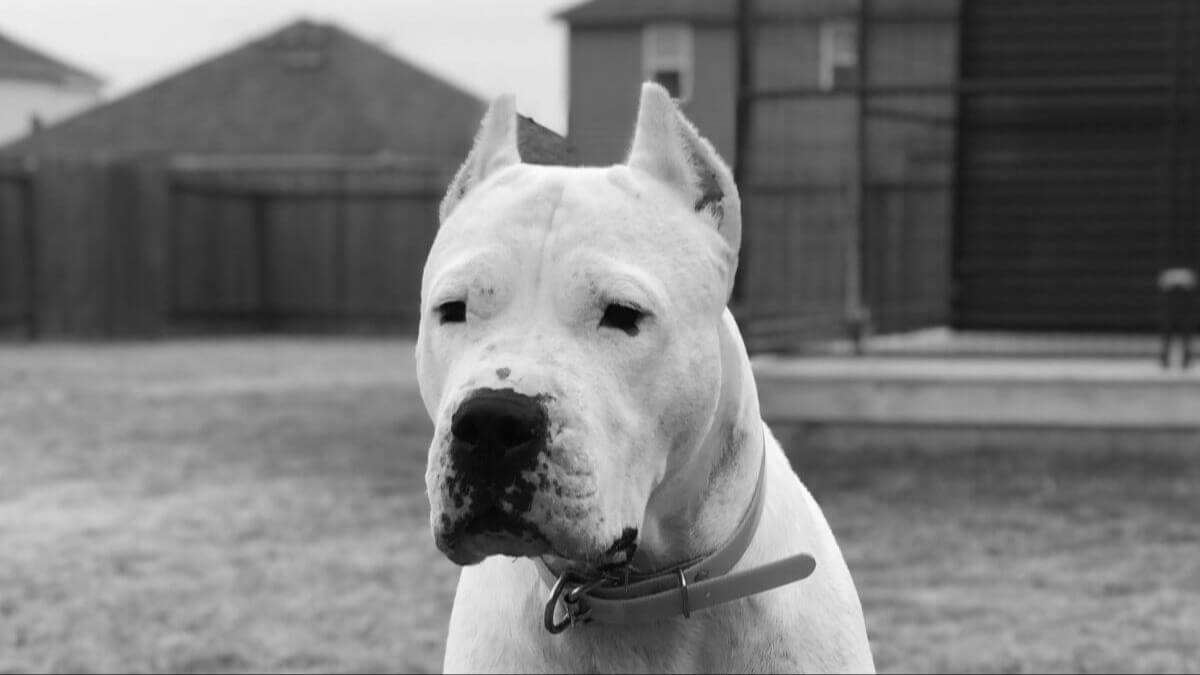
The Dogo Argentino – A Study in Harmony
The Dogo Argentino’s value lies in harmony – beauty, strength, and purpose united in a breed built for function, not fashion.
Home » Meet The Breeds » Dogo Argentino
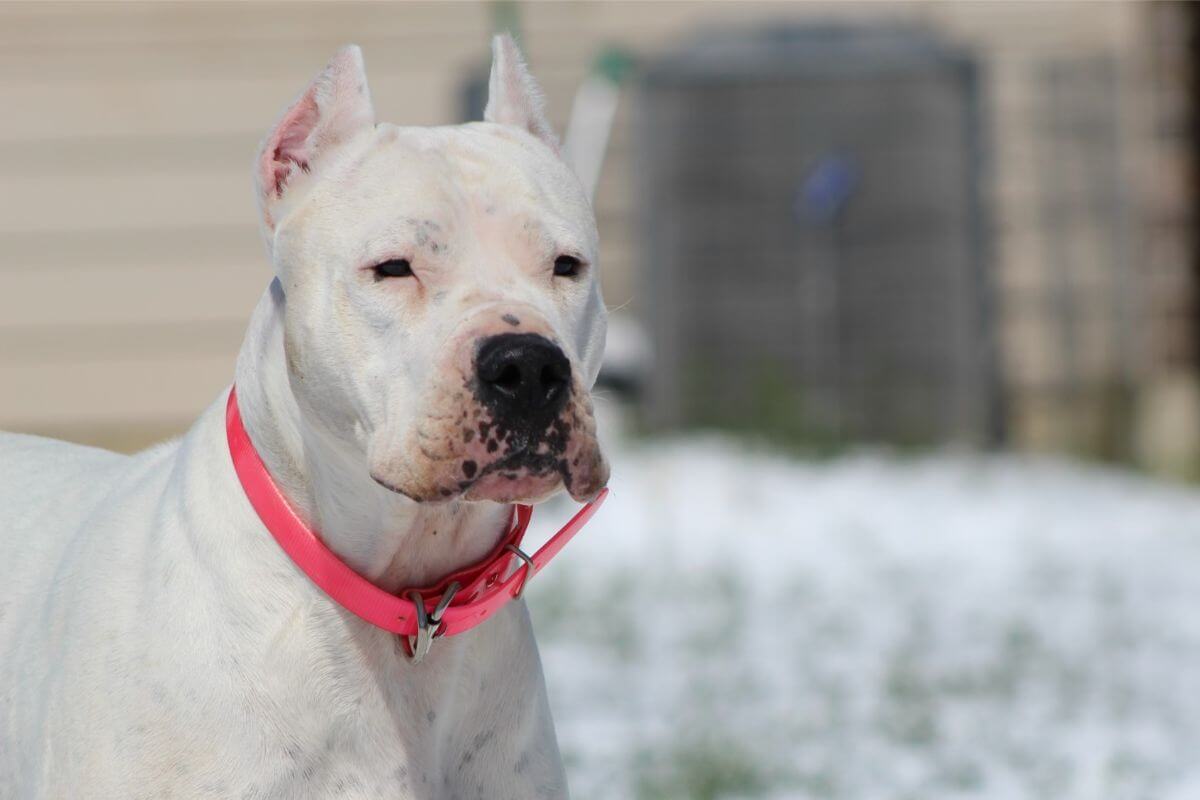
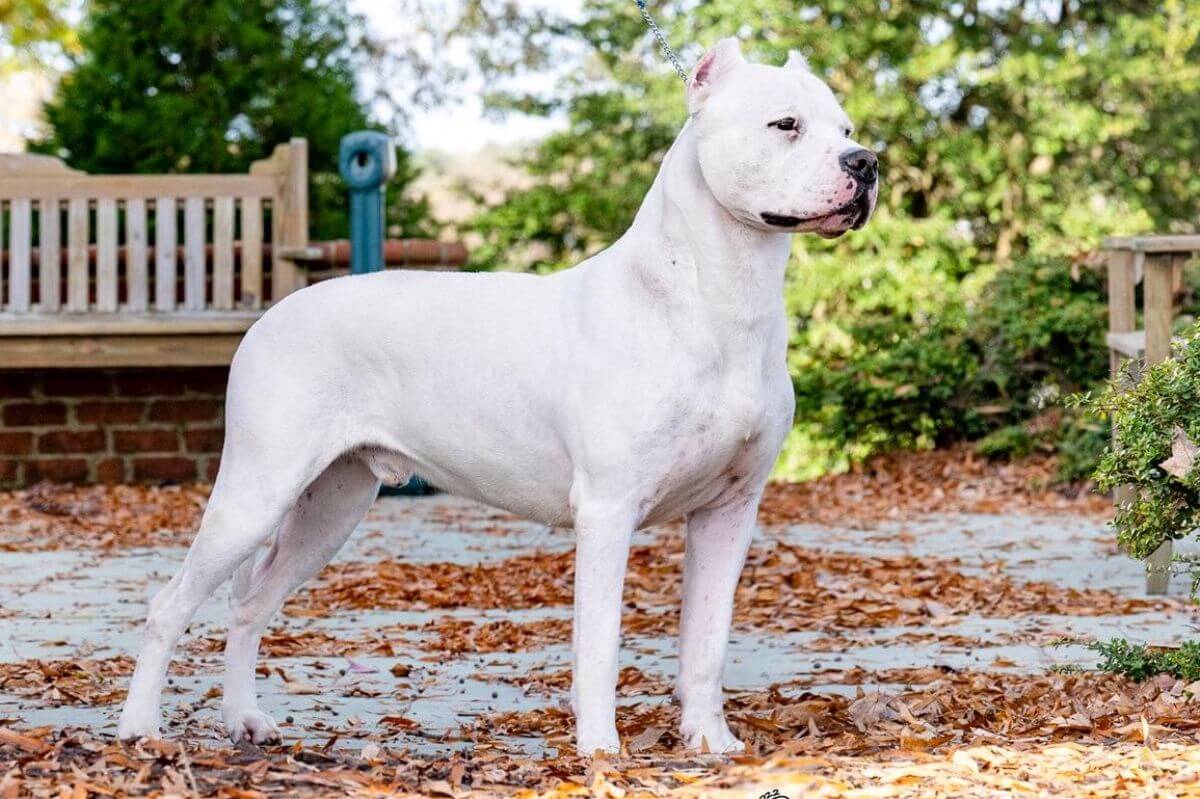
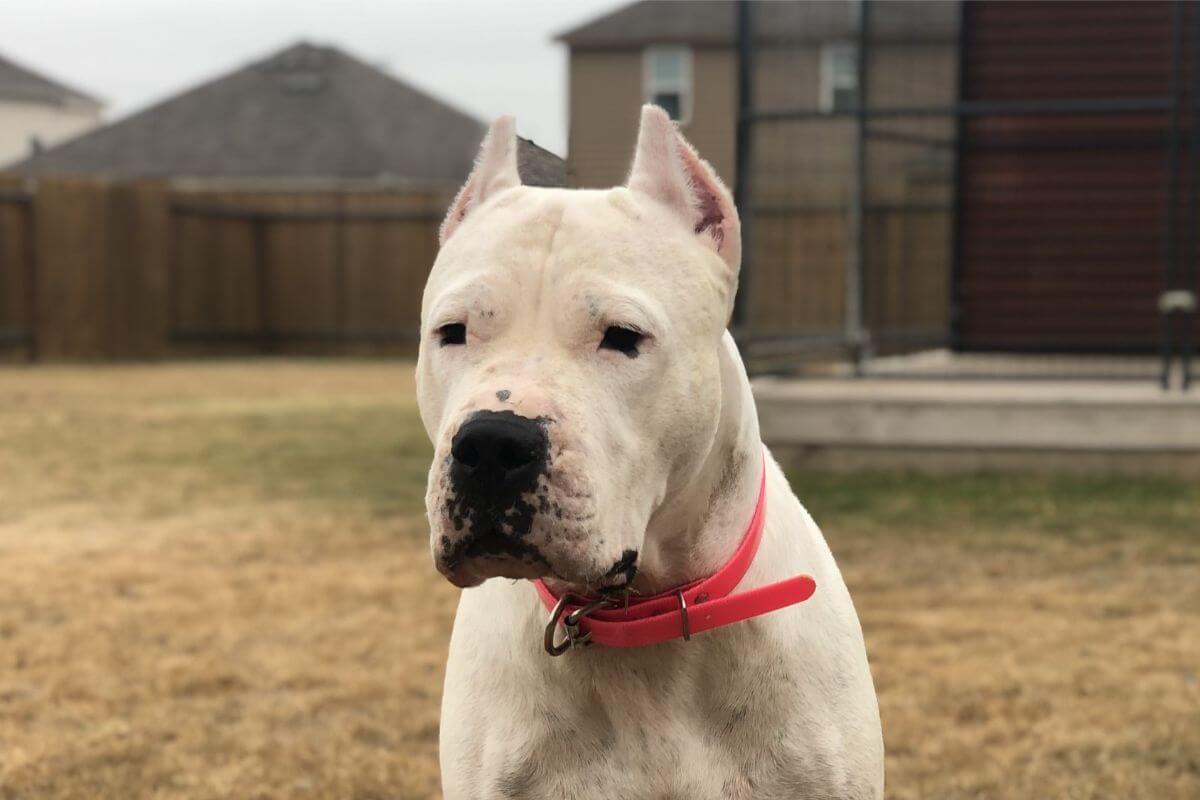
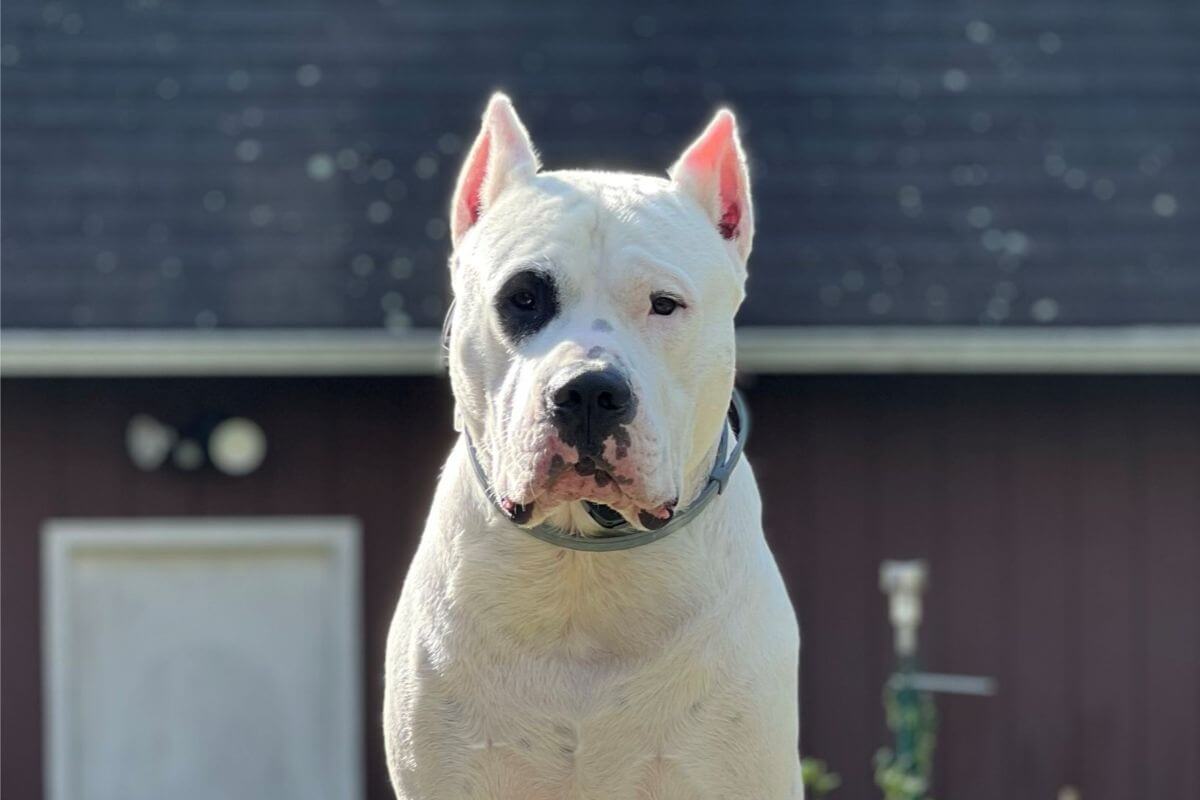
The Dogo Argentino is a muscular and athletic breed known for its courage, loyalty, and versatility. Originally bred in Argentina as a big game hunter, the breed has also gained recognition for its abilities as a guardian, working dog, and devoted family companion.
Working
24 – 26.5 inches
80 – 100 pounds
9 – 15 years
| Country of Origin | Argentina |
|---|---|
| Bred For | Finding, Chasing, Catching |
| Known For | Athletic Build, Short White Coat, Tenacity, Unique Head |
| Popularity | Moderate |
| Temperament | Athletic, Courageous, Faithful |
| Activities | Guarding, Hunting, Police Dog, Military Dog, Conformation Shows, Dog Sports |
The Dogo Argentino was developed in the 1920s by Dr. Antonio Nores Martínez in Córdoba, Argentina. Dr. Martínez sought to create a powerful and versatile dog capable of hunting large game animals like wild boar and puma, while also serving as a loyal companion and protector in the home. To achieve this, he selectively crossed the now-extinct Cordoba Fighting Dog with several other breeds to incorporate specific desirable traits.
The breeds used in the Dogo’s development included the Boxer, Great Dane, Bull Terrier, Pointer, Irish Wolfhound, Dogue de Bordeaux, and Spanish Mastiff. Each breed contributed unique characteristics, such as strength, endurance, scenting ability, and a stable temperament. The resulting dog was a powerful, agile hunter with a white coat, chosen to help the dog stand out during hunts in the dense Argentine wilderness.
The breed quickly proved its prowess in big-game hunting, becoming a favorite choice for local hunters. Beyond its hunting capabilities, the Dogo also exhibited loyalty and protective instincts, making it an effective guardian and companion.
The Dogo Argentino was first recognized by the Argentine Kennel Club in 1964. The breed later gained international recognition when it was officially accepted by the Fédération Cynologique Internationale (FCI) in 1973. The American Kennel Club (AKC) granted full recognition to the Dogo Argentino in January 2020, placing it in the Working Group.
Over the years, the Dogo has earned a reputation for its versatility. In addition to hunting, the breed has been utilized for police work, search and rescue, and as a therapy dog. Its strength, intelligence, and devotion make it a breed with a wide range of abilities.
Despite its many positive attributes, the Dogo Argentino has faced controversy in some countries due to its strong guarding instincts and perceived aggression. Breed-specific legislation (BSL) has restricted or banned ownership in certain regions, emphasizing the importance of responsible breeding, training, and ownership.
Dogo Argentino males typically stand between 24 and 26.5 inches tall at the shoulder, while females measure 24 to 25.5 inches. Height above or below these limits is a disqualification in the show ring. Adult males generally weigh between 88 and 100 pounds, while mature females typically weigh from 88 to 95 pounds.
The Dogo Argentino is a well-proportioned dog with a balanced, athletic build that emphasizes both power and agility. The breed is slightly longer than it is tall (off-square), with a robust, muscular body and a deep chest, short and muscular loins, and a slight to moderate tuck-up of the abdomen.
Texture: The Dogo Argentino has a uniformly straight, short, and smooth coat that lies close to the skin, giving the breed its sleek and somewhat polished appearance. The hair’s length averages one-half to three-quarters of an inch. Long hair is unacceptable in the breed. The Dogo has very thick skin and elastic skin, with wrinkles but no excessive dewlap.
| Standard Color | |
|---|---|
| White | y |
A Note About Color: The Dogo Argentino is an “entirely white” breed. The only exception is a single black or dark spot on the head, and some black spotting on the ear. The spot is not to exceed 10 percent of the head. Black pigmented skin is acceptable anywhere on the dog and may be visible through the coat. This pigmentation often increases with age.
The tail of the Dogo Argentino is long, thick at the base, and tapers to a point at the hock joint. It is carried low when the dog is relaxed but may rise to 45 degrees in an amply curved arc when the dog is alert or active. The tail is never docked.
Owning a Dogo Argentino is a rewarding and serious responsibility. This breed is known for its strength, loyalty, and intelligence, but it requires an experienced and committed owner to meet its physical and mental demands. Their protective instincts and high energy levels make them ideal for active homes that can provide proper socialization, exercise, and training.
The Dogo Argentino is generally a robust breed with a lifespan of 9 to 15 years. However, like all dogs, individuals can be predisposed to certain genetic and breed-specific health issues. Regular veterinary care, a balanced diet, and a healthy lifestyle can help to maintain a Dogo’s quality of life.
The Dogo Argentino can be prone to several health concerns, including:
The Dogo Argentino is a courageous, loyal, and intelligent breed, known for its strong protective instincts and affectionate nature with its family. This breed thrives by forming close bonds with its human companions and is highly devoted to their safety and well-being.
Dogos are generally good with children when raised together, displaying a gentle and playful demeanor. However, they can be wary of strangers and require early and consistent socialization to make sure that they remain confident and well-mannered in various situations. While they can coexist with other dogs, their assertive nature requires careful introductions and supervision, especially with unfamiliar animals.
The Dogo Argentino requires a high-quality, well-balanced diet to maintain its muscular build and high energy levels. Puppies should be fed a specially formulated large-breed puppy food to support proper growth and joint development, typically in three to four meals per day.
Adult Dogos usually need 3 to 4 cups of food daily, divided into two meals, although the exact amount depends on their size, age, metabolism, and activity level. Access to fresh water is essential, and feeding schedules should be consistent. To prevent bloat, it’s best to avoid feeding immediately before or after vigorous exercise and opt for elevated food bowls if recommended by a veterinarian or the dog’s breeder.
The Dogo Argentino is an intelligent and eager-to-please breed but requires firm, consistent training to manage its strength and protective nature. Early training should focus on obedience and socialization to make sure the dog is comfortable around people, children, and other animals.
Positive reinforcement methods, such as treats and praise, work best, as harsh training techniques can lead to distrust or defiance. The Dogo’s strong prey drive and natural guarding instincts mean these dogs need clear boundaries and consistent leadership. They excel in advanced Obedience, Tracking, and Protection training, making them ideal for experienced owners who can dedicate time to nurturing their potential.
The Dogo Argentino is a high-energy and athletic breed that requires ample daily exercise to stay healthy and happy. A minimum of 60 to 90 minutes of physical activity is recommended, which can include brisk walks, jogging, or interactive play sessions.
| Energy Level | High |
|---|---|
| Exercise Requirements | 1 Hour/Day (Minimum), Daily Walks, Vigorous Running, Regular Exercise, Mental Stimulation |
This breed thrives on mentally and physically stimulating activities such as Tracking, Agility, and Obedience. Without sufficient exercise, Dogos can become bored and may develop destructive behaviors, making regular outdoor activities and mental challenges essential for their overall well-being.
The Dogo Argentino is a low-maintenance breed when it comes to grooming, thanks to its short, smooth coat. Weekly brushing with a soft-bristle brush or grooming glove is usually sufficient for removing loose hair and maintaining a healthy coat.
| Coat Type | Straight, Short, Smooth, Uniform |
|---|---|
| Grooming Requirements | Weekly Brushing, Occasional Bathing, Routine Ear Cleaning, Periodic Nail Trimming, Regular Tooth Brushing |
Bathing should only be necessary when the dog becomes dirty or develops an odor, as overbathing can strip the coat of its natural oils. Routine care, including nail trimming, ear cleaning, and teeth brushing, is essential to prevent health issues and keep the Dogo in top condition.
The Dogo Argentino is best suited for homes with a secure outdoor space where the dog can freely roam and play. While these dogs can sometimes adapt to apartment living, they need daily exercise and mental stimulation to prevent restlessness and destructive behaviors.
This breed is sensitive to extreme temperatures, tolerating heat better than cold due to its short coat. In colder climates, the Dogo may need a sweater or jacket for warmth. These dogs are deeply loyal and thrive when included in family activities, making them excellent companions for active adventurers who are willing and able to meet their needs.
Dogo Argentino puppies are undeniably appealing, but they require consistency, patience, and an understanding of the breed’s unique needs. Proper guidance during puppyhood ensures that they grow into confident, well-mannered adults that are a joy to live with.
Caring for a Dogo Argentino puppy starts with creating a safe and structured environment. Puppy-proofing the home is essential, as the pup’s natural curiosity can easily lead it into trouble.
Socialization should begin early, exposing the puppy to a variety of people, animals, and environments to support positive interactions in new situations. Puppy classes or controlled playdates are excellent opportunities to build confidence and good behavior.
Nutrition is especially important during this stage. Feeding a high-quality large-breed puppy food ensures proper growth and supports joint health. The Dogo pup typically requires three to four small meals a day, transitioning to two meals as it matures.
Training should start early and focus on basic obedience and housetraining, and introducing a crate as the puppy’s “safe space.” Positive reinforcement works best for this intelligent breed, and establishing boundaries early helps to prevent any behavioral issues later on. Regular vet checkups and communication with the puppy’s breeder are also critical for ensuring a healthy start in life.
The Dogo Argentino is recognized by the world’s leading registries and kennel organizations, which categorize the breed into a specific Group based on its unique characteristics. This breed is recognized worldwide under the following Group designations:
| Organization | Group Designation |
|---|---|
| AKC (American Kennel Club) | Working |
| UKC (United Kennel Club) | Guardian |
| CKC (Canadian Kennel Club) | Not Recognized |
| ANKC (Australian National Kennel Council) | Not Recognized |
| RKC (The Royal Kennel Club) | Not Recognized |
| FCI (Fédération Cynologique Internationale) | Group 2: Pinscher and Schnauzer Molossoid Breeds – Swiss Mountain and Cattle Dogs; Section 2.1: Molossian, Dogue Type |
The ideal Dogo Argentino is described by a Breed Standard that is approved by each of the world’s leading registries and kennel organizations. The Breed Standards for this breed may be found in the following links:
| Organization | Breed Standard |
|---|---|
| American Kennel Club | AKC Dogo Argentino Breed Standard |
| United Kennel Club | UKC Dogo Argentino Breed Standard |
| Canadian Kennel Club | CKC Not Recognized |
| Australian National Kennel Council | ANKC Not Recognized |
| The Royal Kennel Club | RKC Not Recognized |
| Fédération Cynologique Internationale | FCI Dogo Argentino Breed Standard |
Yes, Dogo Argentinos shed. However, regular brushing helps to control any loose hair and will maintain the coat’s sleek appearance.
No, Dogos are not hypoallergenic. They shed and produce dander, which can trigger allergies in sensitive individuals.
Dogo Argentinos typically live between 9 to 15 years. With proper care, regular exercise, and a healthy diet, they can typically enjoy a long and active life.
Yes, Dogos are loyal and protective, making them excellent family dogs when properly trained and socialized. They are affectionate with their families but require an experienced owner to manage their strong instincts.
Dogo Argentinos are not excessive barkers but will alert their owners to any perceived threat. Their barking is usually purposeful and tied to their natural guarding instincts.

The Dogo Argentino’s value lies in harmony – beauty, strength, and purpose united in a breed built for function, not fashion.

Thinking about the Dogo Argentino? Learn five key facts about this bold, loyal, and powerful breed before adding one to your home.
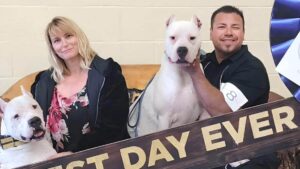
Lynn Felix of Dogos Del Gran Reino shares her passion for Dogos Argentinos, focusing on breed type, health, and responsible breeding.
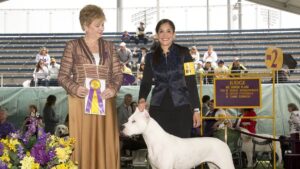
Interview with a Breeder/Owner Handler Araceli Echavarria. Araceli shares her experience in the world of purebred dogs and dog events.
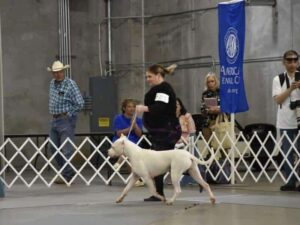
Amy Collins is the breeder behind Polleo Dogo Argentino. Read about the kennel’s beginnings, champion dogs, puppies, photos & more!
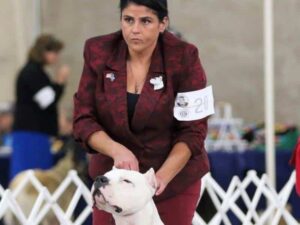
Kassi McLaughlin is breeder behind El Remate Dogos Argentinos. Read about the kennel’s beginnings, the puppies, and much more!
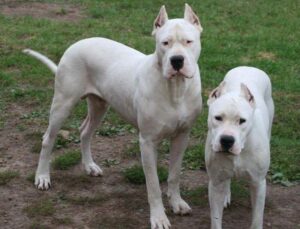
Kristin Winter is the breeder behind Nemesis Dogos. Read about the kennel’s beginnings, champion dogs, Dogo Argentino puppies, photos & more!
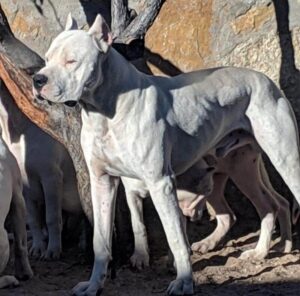
Richard Lee is the breeder behind Del Caritas Dogo Argentino. Read about the kennel’s beginnings, champion dogs, Dogo puppies, photos & more!
The best way to ensure a long and happy relationship with a purebred dog is to purchase one from a responsible breeder. Not sure where to begin?
Contact the National Parent Club’s Breeder Referral Program, which is listed on the AKC Breeder Referral Contacts page.
